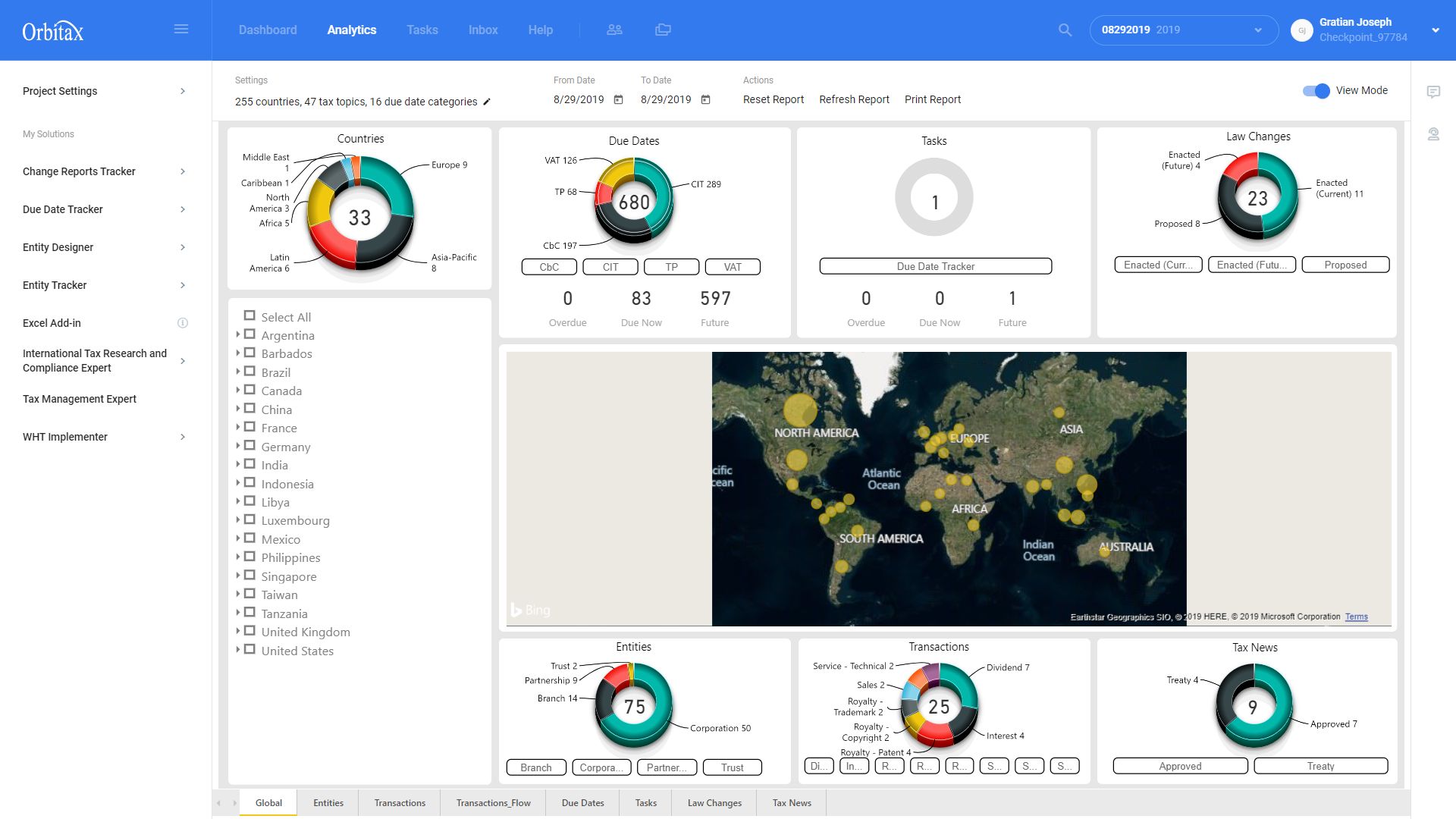Jump to:
| Harnessing technology will be central to managing 2024 GMT requirements efficiently |
| Data will be at the crux of everything for GMT in 2024 |
| Securing tech and skills investment will require a powerful business case |
| Global minimum tax in 2024 and beyond |
In 2024, the new Global Minimum Tax (GMT) regime comes into force under the OECD’s base erosion and profit-shifting (BEPS) reforms. Designed to prevent the practice of moving profits to lower tax jurisdictions, under the new “Pillar Two” rules, companies whose revenues exceed €750m will have to pay a minimum tax rate of 15% in each country where they do business.
The new requirements are complex and still evolving. They will need to collate, review, and report on more data more frequently, in more jurisdictions, gathering it from a range of disparate sources, conducting more complex calculations, complying with a myriad of different rules, and meeting ever-tighter deadlines.
The impact is likely to be significant, and tax professionals and businesses need to be prepared for what lies ahead. To do this, there are three key considerations to bear in mind:
Harnessing technology will be central to managing 2024 GMT requirements efficiently
- Navigating the intricate web of new regulations entails overseeing the distinct rules set across 138 countries in the BEPS initiative. Jake Fulton, Head of Quantitative Tax reporting at Orbitax, talked at Thomson Reuters Synergy 2023, about the unparalleled intricacy of “Pillar Two,” which overlays 138 sets of rules onto the existing legal framework. Advanced technology becomes indispensable in this scenario, as it streamlines data processes, supports intricate tax calculations, and secures comprehensive control. Despite the common reliance on external guidance, Debbie Morgan, from Thomson Reuters stresses the imperative of maintaining in-house technological control for a comprehensive understanding of the broader strategic landscape.
Data will be at the crux of everything for GMT in 2024
- At the heart of all of this is data. Data informs what tax liabilities exist, where, and when they need to be filed and paid, and underpins modeling and forecasting.
- Yet, merging data from varied sources in different formats poses challenges. Relying solely on Excel may fall short, becoming time-consuming as complexities arise. Debbie Morgan advises against Excel’s limitations, especially as regulations evolve, suggesting dedicated tools. These tools can pull data from Excel files, as well as from other formats such as PDFs and from other systems such as tax provision solutions via integrations, which can then perform those challenging calculations with country-by-country calculators built in. “You have to calculate QDmtt, and your Globe Income Tax STTR IIR Utpr have to run all local country calculators, which could be different,” explains Morgan.
- Dennis Bremeyer, a Senior Manager at EY, believes it’s important to go through the data and systems thoroughly – or have advisers do so. He says, “A lot of your data – probably around 60-70% -can come from provision. When you analyze provision data, you may want to go back and re-architect some of your provision to be able to get even more numbers out of it or to be able to track it.”
- However, it needs to be properly collated before it can be fed into calculations and reported – which can be a challenging task when it comes from disparate sources in different formats. What steps can be taken to ensure accuracy and comprehensiveness?
- Relying on Excel spreadsheets carries risk because, as a tool, it may simply not be up to the job, as well as being a very time-consuming way to manage complex tasks such as doing iterative calculations
Securing tech and skills investment will require a powerful business case
Senior leaders may need to be convinced of the need to invest in dedicated technology, so a compelling business case will need to be built to justify the capex. That means being able to outline clearly the impact that you are facing, and then explaining why you need a budget to be able to handle these new requirements. Inevitably, people will ask: why can’t it be done another way without technology? We already have Excel and tax provision software, so why can’t we use that? One of the first hurdles is describing the complexities and the risks.
The next is communicating how the technology program may have to change over time. “The leading recommendation I would give, is to go for a phased approach for the solution,” advises Bremeyer. “You’re probably not going to be able to do everything in a matter of weeks. Refine your process as the requirements become clearer. It’s not a case of turning on the software and you’re ready to go. The rules are changing, the software is going to keep evolving, so you’re going to have to plan for additional iterations.”
In addition, organizations may need to plan for adding to internal resources and upskilling existing tax teams, higher audit fees, and increased external advisory costs.
Global minimum tax in 2024 and beyond
2024 is just the beginning: GMT is a long-term reform whose requirements will be ramped up over the years ahead. However, despite the challenges and risks, opportunities also exist, for instance, to identify more effective methods to gather data to integrate processes, and ultimately create efficiencies.
As Fulton says, “When we wrap up how multinationals are going to address all of these issues, we really need to look at the tax process: what’s the best way of doing all of these calculations and monitoring all these changes? What you arrive at is how important it is to lean into technology.”
Technology solutions like Orbitax Global Minimum Tax – which integrates with ONESOURCE Tax Provision from Thomson Reuters – is designed to manage the changing regulations, automate the complex calculations necessary, and help organizations create processes that are fit for purpose for this new era.
To find out more about how GMT could impact your organization, and how to mitigate the risks, read our white paper on Pillar Two.
Solution |












